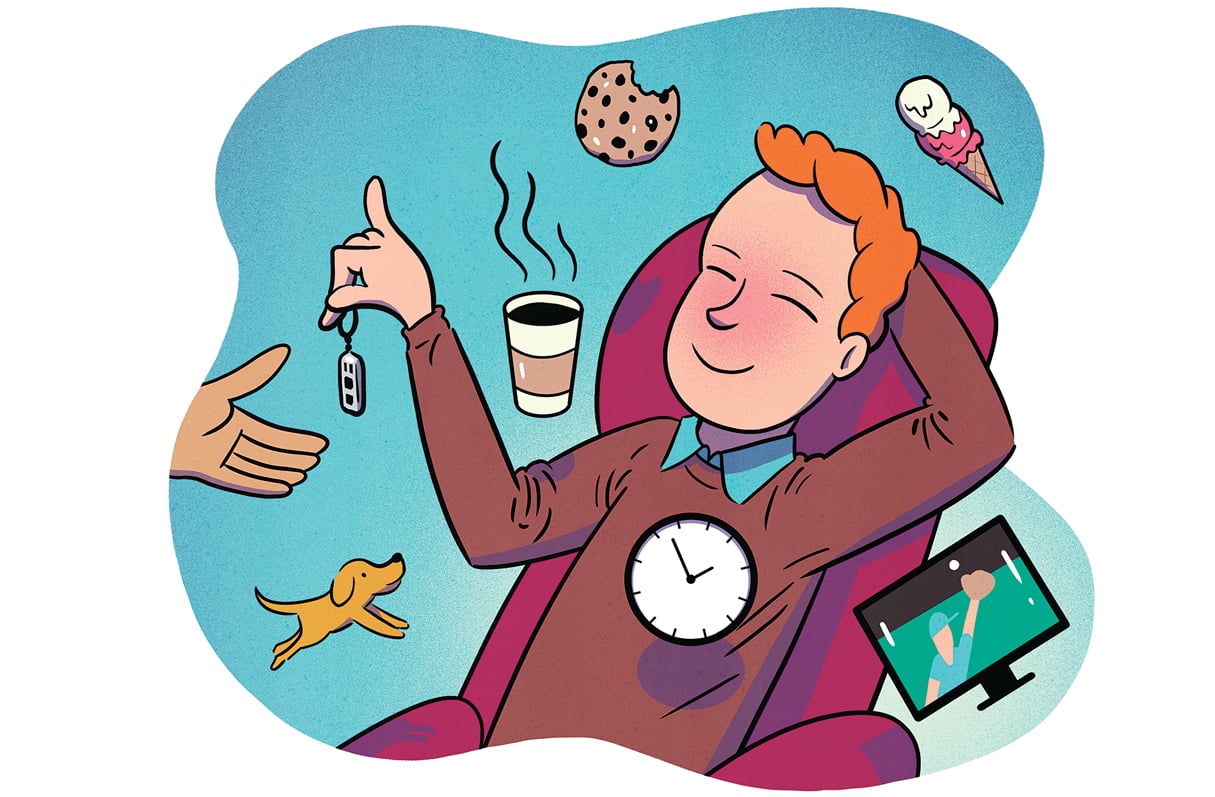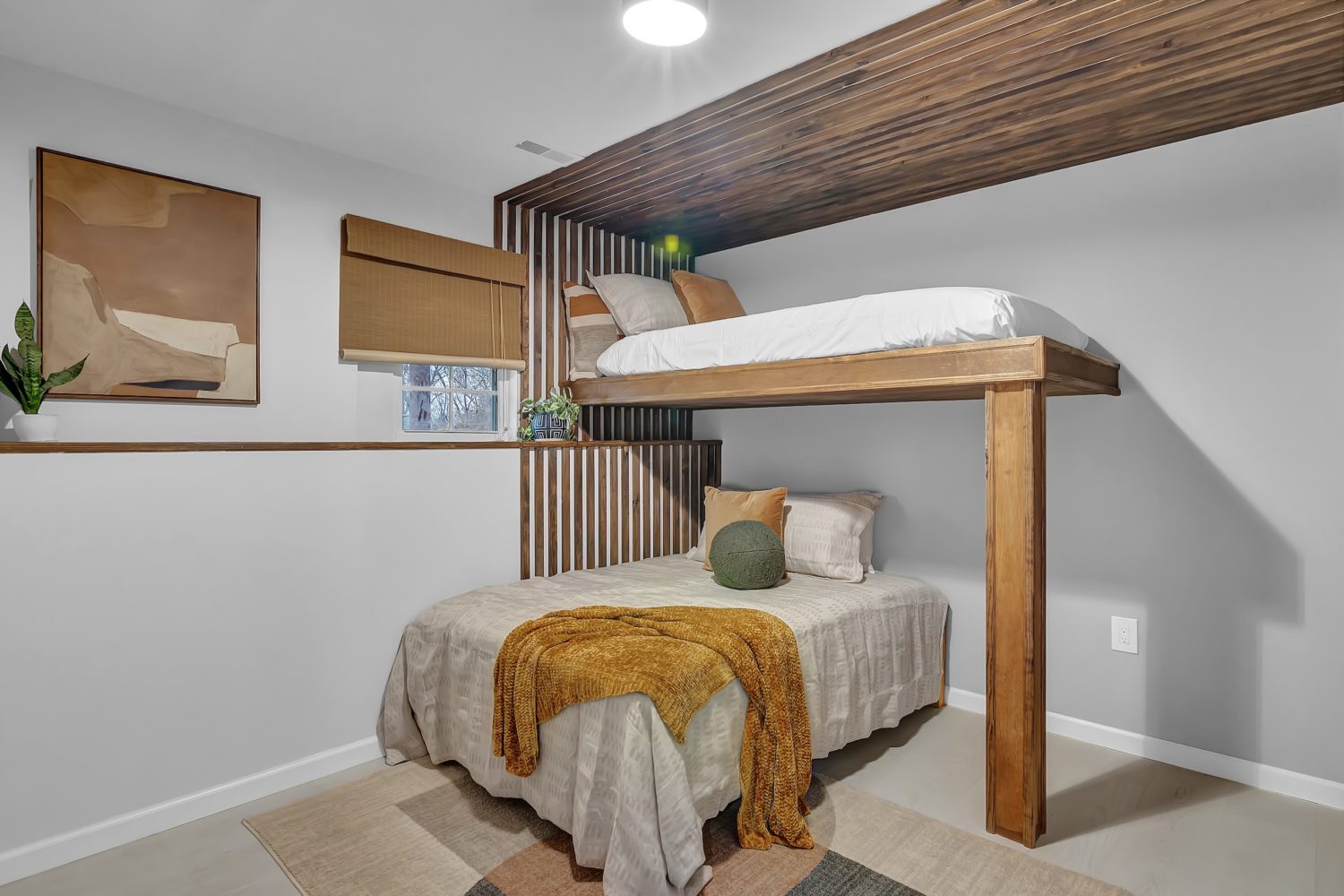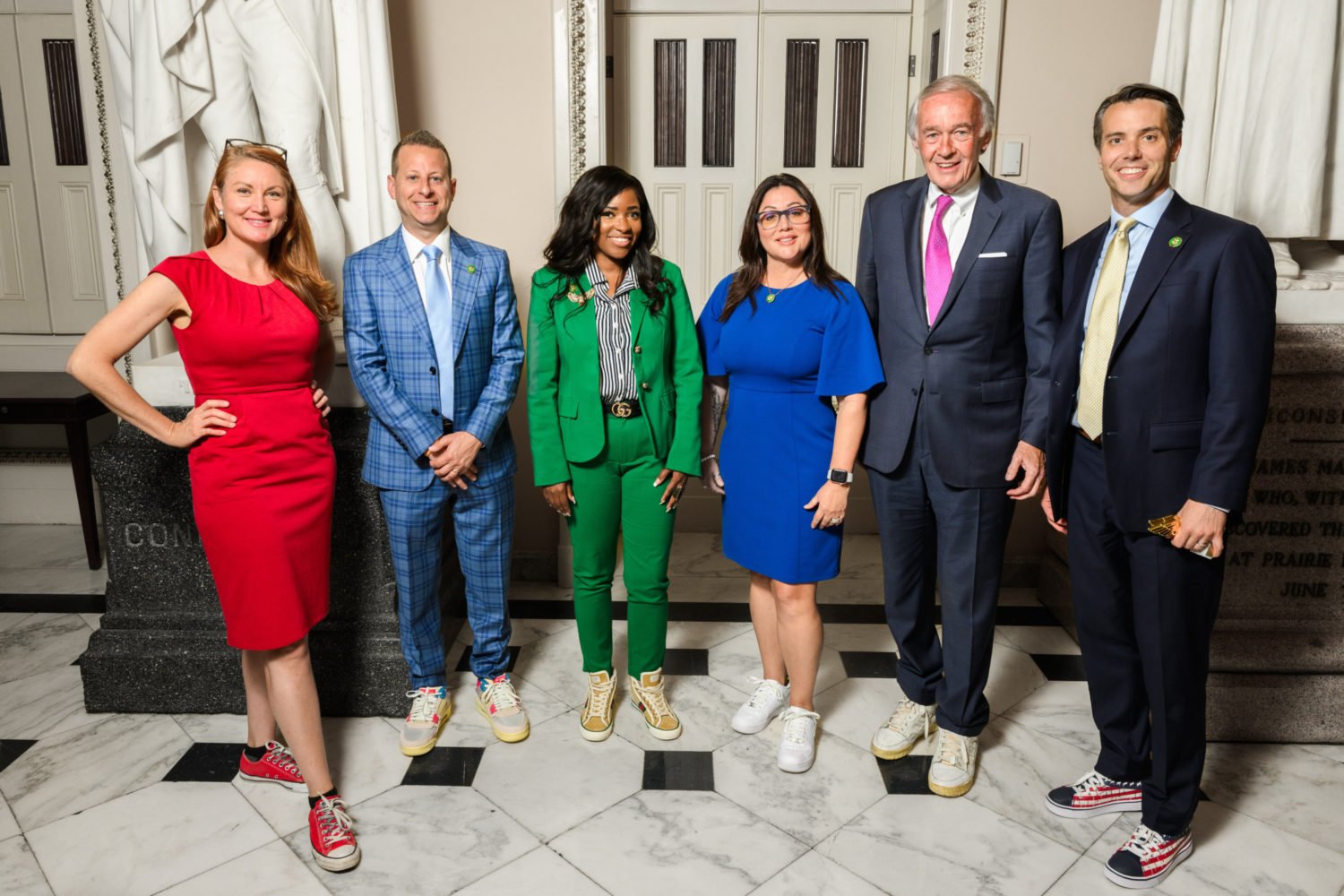A car dealership isn’t a place most people willingly hang out. Well, unless it has winetastings. Or a fitness center. Or a dog park. Or a putting green.
“In an era where the car-shopping experience is happening online, how do you stand out as a dealer?” says Jim Treece of Automotive News. “The amenity wars are going pretty strong.”
While the most outlandish showroom perks haven’t hit Washington yet—the wine shop and dog park are at a Honda dealer in Fort Worth; the fitness center is at a Miami Lexus showroom—local dealers are revving up their offerings beyond free wi-fi.
At Honda of Chantilly, customers waiting for cars to be serviced will find a quiet room with massaging recliners and dim lighting as well as a children’s waiting area with beanbag chairs, toys, and Netflix. Meanwhile, Pohanka Lexus of Chantilly outfitted a customer lounge with three 70-inch HD TVs playing sports channels. Several local dealers, including Sheehy VW of Springfield and Priority Nissan Chantilly, offer free manicures one day a week.
“That touchy-feely customer service has bloomed in the past five years,” says William Hopper of the Washington Automotive Press Association.
Perhaps no local automotive group does touchy-feely better than Lindsay Automotive. At Lindsay Lexus in Alexandria, customers are treated to cookies baked hourly, ice cream, a cappuccino bar, an Apple-like “genius bar” to answer questions about a vehicle’s technology, and eight lounges—including two with a fireplace.
Most BMW dealers now also have a “product genius,” and some dealers, such as Passport BMW in Suitland, will send their “genius” to your home in the first few weeks after you’ve bought a vehicle to answer any questions you may have.
Because car pricing is fairly transparent now—sites such as Kelley Blue Book and Edmonds.com tell you what you can expect to pay—dealers need to lure you in for service.
“The financial aspect has moved from the front end to the back, if you will,” says Lenny Gonzales, general manager of Pohanka Acura in Chantilly. “The opportunity to make money on the sale of the car has shrunk down to a minimum. The service business is where you want to make money and keep them coming back.”
One way Gonzales tries to get customers to return—Pohanka Acura is the country’s largest Acura dealer—is by offering almost round-the-clock hours: The service department is open from 6 am to midnight Monday through Friday, 7 to 7 Saturday and Sunday. Other Pohanka dealers offer extended hours as well.
Not that you have to drive to a dealer for service—some, including Passport BMW in Suitland and all Lindsay dealers, will pick up your car for free and leave you with a loaner, then deliver your serviced car back to you.
And those loaner cars? They’ve been stepped up, especially at high-end dealers.
“Loaners started out as Enterprise or Hertz rentals,” says Peter Collins, general manager of Mercedes-Benz of Alexandria. “But if you’re dropping off a Mercedes S-Class for service—a car you’ve paid $100,000 to $125,000 for—and you’re given the keys to a Ford Escort as a loaner, that client is not happy. So we converted our loaner fleet to exclusively Mercedes.”
The cost of maintaining his 125 loaner Benzes has an upside. “We sell two or three cars a month from doing that,” Collins says. “They come in with a 2008 or 2009 that needs service, and they see the 2015 and the technology in it—like a blind-spot monitor—and they fall in love.”
More than free Starbucks and shoeshines, what customers want is expert repairs and fast service. Increasingly, dealers are putting in express lanes for customers either to drop off cars or to get quick services such as oil changes. Because even if dealerships have become more pleasant places to while away time, everyone has a limit.
“What people in this area have a lot of is money—what they don’t have is more time,” says Pohanka Acura’s Gonzales. “At the end of the day, they’d rather have in-and-out service than the time to get their nails done.”















